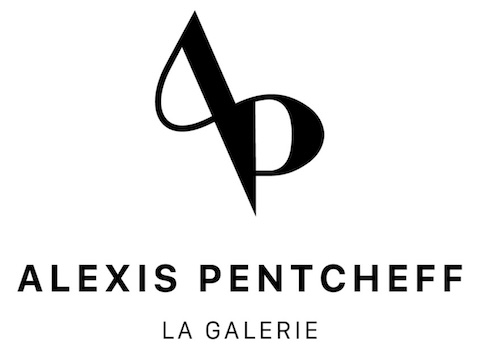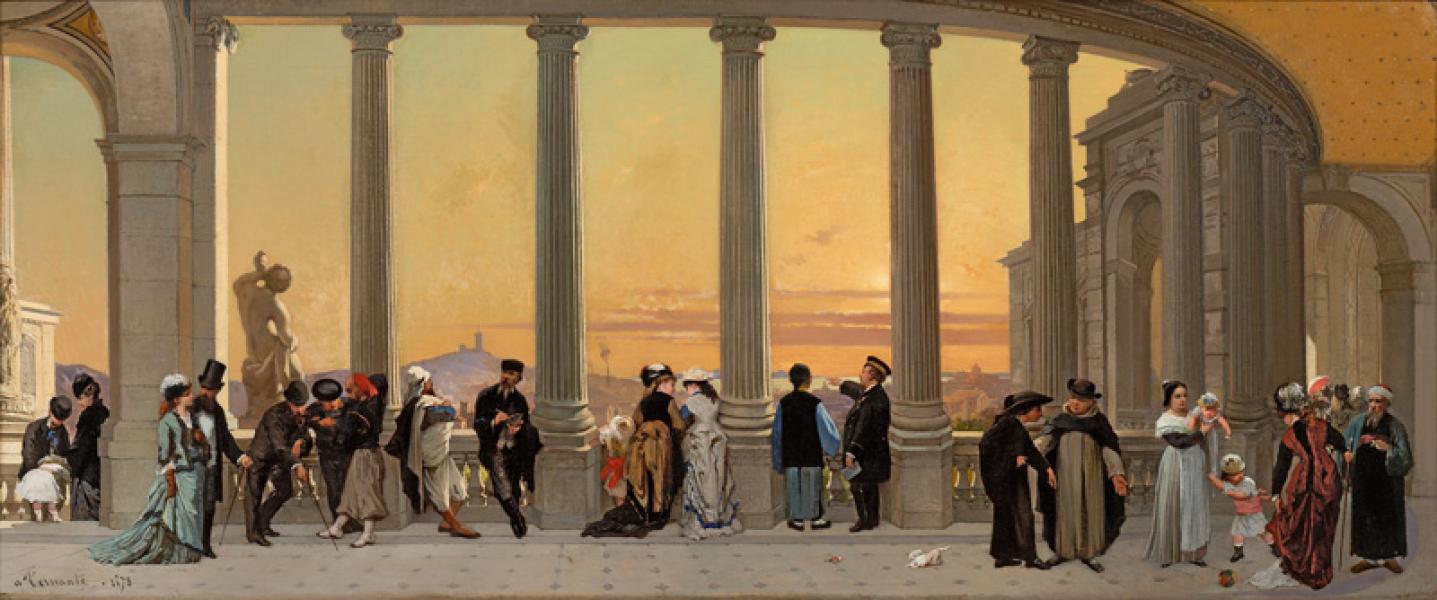Personnages sur la terrasse du Palais Longchamp, 1878
Oil on canvas, signed lower left.
54.50 x 130 cm
Provenance :
Private collection, France
THE WHOLE WORLD IN MARSEILLE
A strange gathering is taking place here, under the colonnade of the Palais Longchamp water tower. Heteroclite, as if the whole world had gathered here, not only elegant bourgeois women in hats and their little girls, men in frac and top hat, more modest people, members of the clergy, civil servants, but also Oriental figures from the near, middle and far East, a reminder of the colonial importance of Marseille at the time and a foreshadowing of the 1906 International Colonial Exhibition that was to leave its mark on the city. Beneath the high shafts of the columns, these archetypes converse in surprisingly conciliatory fashion. At the center, an artist, painter or writer, busy with his task, is one of the only figures to face us.
When this picture was painted in 1878, construction of the Palais Longchamp was barely complete. It had only opened to the public nine years earlier, on August 15, 1869. Construction was supervised by Henri Espérandieu, who also designed most of the emblematic buildings of Second Empire Marseille (the Cathedral de la Major, Notre Dame de la Garde, the Palais des Arts...).
At the point where the waters of the Durance arrive via the Marseille canal that supplies the city, it was decided to erect a commemorative monument, a hymn to water.
The arrival of water in Marseille was indeed an event, marking the culmination of gigantic works begun in 1838 under the direction of Franz Mayor de Montricher. Nearly 90 kilometers of canal, both underground and uncovered, carried water from the Durance. Five hundred bridges and aqueducts mark the route. It took more than thirty years to complete the work and supply the city, reducing the risk of cholera epidemics and enabling the entire basin to develop agriculture, particularly market gardening, production (one hundred factories were supplied) and urban planning (the city tripled its population in a short space of time). It was a veritable revolution, overturning the entire landscape and enabling the Phocaean city to flourish in many areas.
The architectural achievement that would be dedicated to it should therefore be equal to this considerable contribution to the city.
Around a monumental water tower surmounted by a circular colonnade, two buildings unfold, housing the Museum of Natural History in the right wing and the Museum of Fine Arts in the left wing. It is in the heart of the grand staircase leading to the latter that two famous compositions by Pierre Puvis de Chavannes, Marseille, colonie grecque and Marseille, porte de l'Orient, were placed.
The sculpted and painted decorative program was ambitious, and the building was intended to be a landmark of its time. At the center of the design is a huge sculptural group by Jules Cavelier, an allegory of the Durance River drawn by four Camargue horses. Other sculptures created for the site include animal groups by Barye, and a Triton sounding the conch shell by Eugène Lequesne, seen here from the back.
The choice of subject for this painting is indeed quite surprising, since the painter has chosen to place himself under the colonnade, thus taking the monument in reverse. His subject is not the Palais itself, its spectacular architecture, but rather the symbol it embodies, the union of all the people of Marseille around this life-saving water and the modern waterworks. Notre-Dame-de-la-Garde, visible in the background, watches over this concord. The Mediterranean, also visible in the background, is a reminder of all that Marseille owes to the sea.

